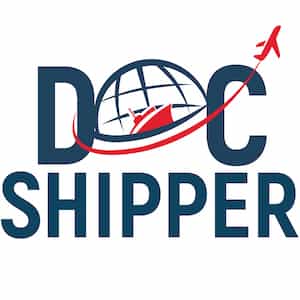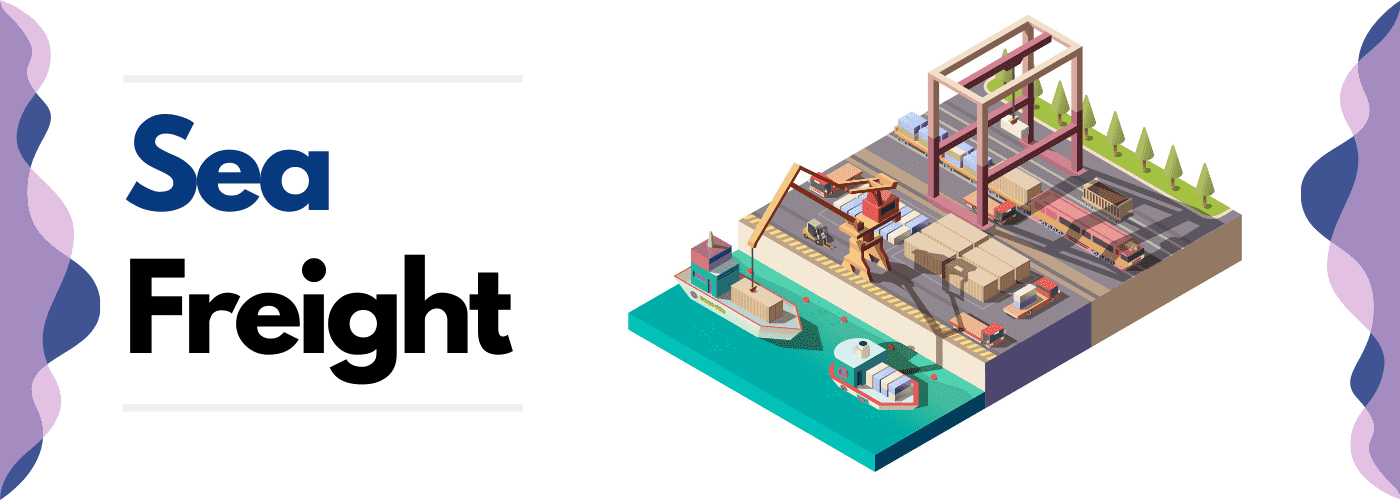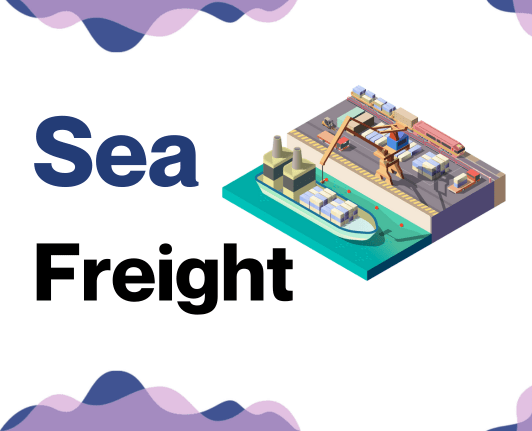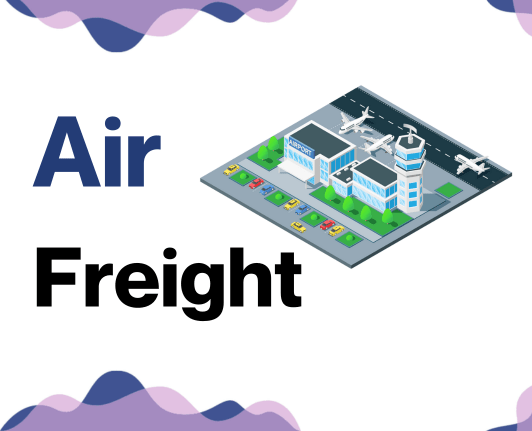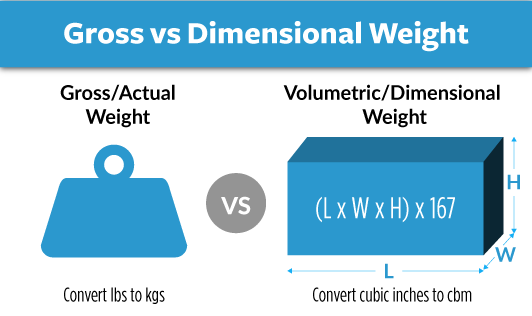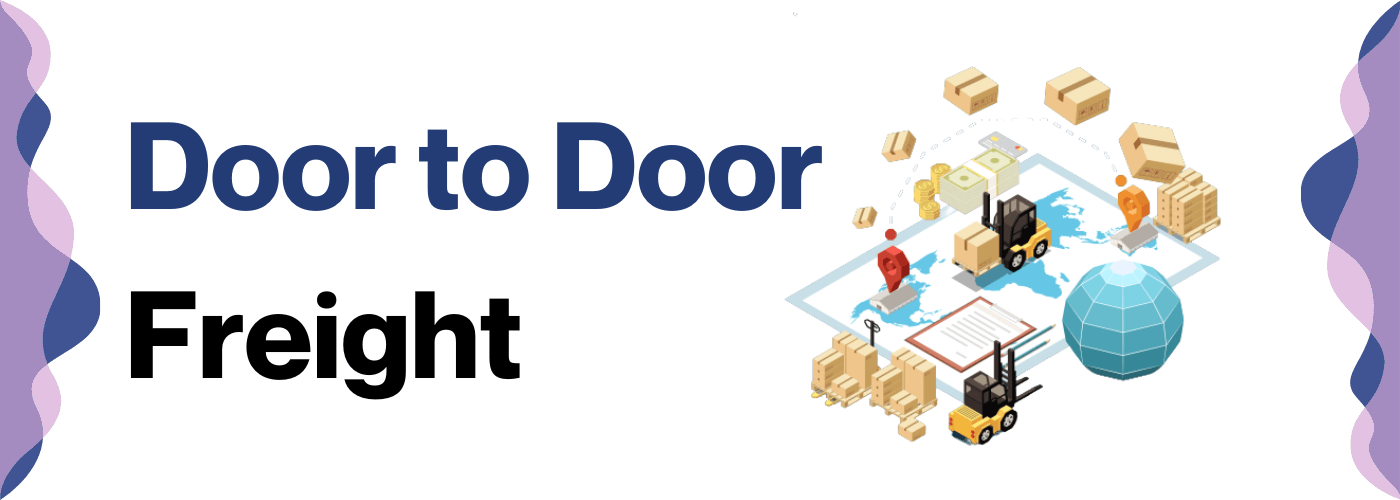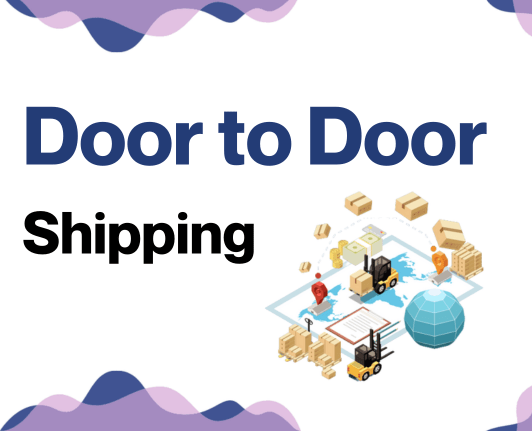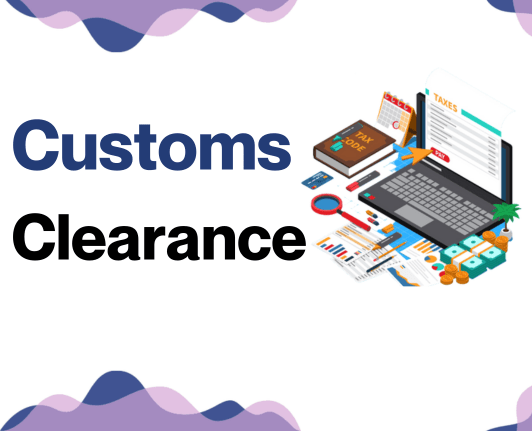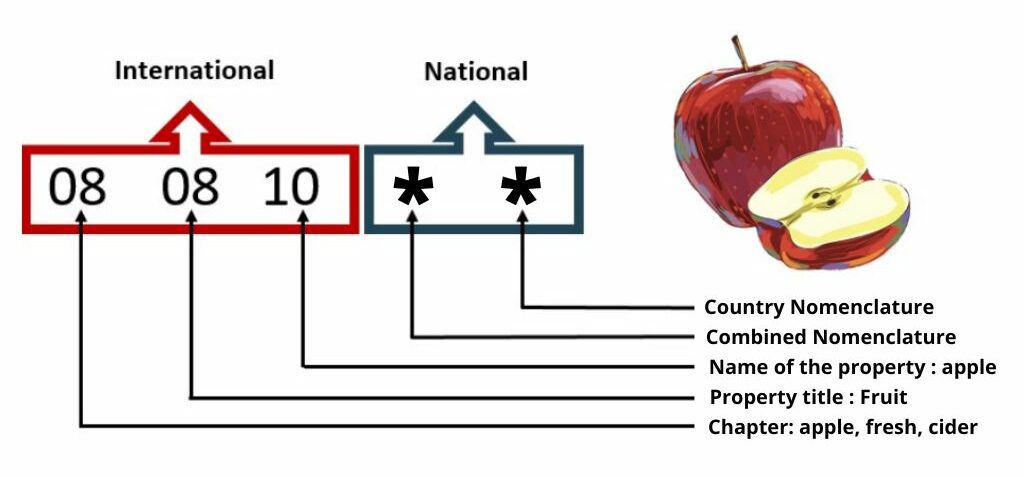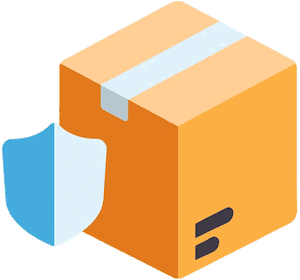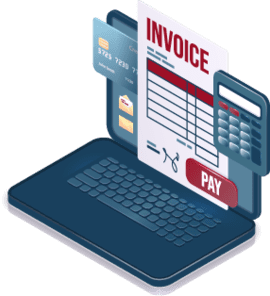Did you know that shipping freight between Malaysia and South Korea can feel like learning how to tango while riding a unicycle? The intricacies of understanding rates, transit times, and navigating baffling customs regulations can sometimes be puzzling, even to seasoned shippers. In this guide, we shed light on these and other complexities, providing a breakdown of different freight options (be it air, sea, road or rail), demystifying the customs clearance process, and giving you the lowdown on duties and taxes. Along the way, we sprinkle in some tailor-made advice for businesses to turn these challenges into stepping stones towards international shipping success. If the process still feels overwhelming, let DocShipper handle it for you! As your trusty international freight forwarder, we take care of every step, ensuring your journey from Malaysia to South Korea is as graceful as a tango, minus the unicycle.
Table of Contents
Which are the different modes of transportation between Malaysia and South Korea?
Shipping goods between Malaysia and South Korea? Some options might be off the table due to factors like distance and international boundaries. Still, you're not left in the lurch. There are a few practical options to choose from—air, sea, or a mix of both. Think about it as choosing the right vehicle for a traveling circus—you wouldn't pack your elephants into a smart car, would you? The same goes for shipping. The right option depends on factors such as what you're shipping and how quickly you need it to arrive. Get it right, and it's smooth sailing... or flying!
How can DocShipper help?
Got Malaysia to South Korea shipping needs? Trust DocShipper! With our expertise, we oversee every step, from transport organizing to customs clearance, simplifying the process for you. Want a doubt-free experience? Reach out for a free estimate within 24 hours. Any questions? Our consultants are ready to help at no cost.
DocShipper Tip: Sea freight might be the best solution for you if:
- You're dealing with hefty quantities or oversized goods. Sea transport is your go-to for maximizing space without stretching your budget.
- Time sensitivity isn't a concern for your shipment. Ocean freight is known for its leisurely pace, especially when compared to the speed of air or rail.
- Your supply chain connects key international harbors. This positions you to take full advantage of a wide-reaching network of ocean trade routes.
Sea freight between Malaysia and South Korea
Ocean shipping, the lifeline of trade between Malaysia and South Korea, connects the industrial hubs of Kuala Lumpur and Busan through strategic cargo ports. A cost-effective solution for high-volume goods, sea freight stands out despite its slower speed. This route fosters trade relations, playing a crucial role in driving the economies of both nations.
Yet, for many businesses and shippers, shipping between these countries involves a myriad of challenges, almost like trying to solve a Rubik's cube blindfolded. Unclear procedures, misconceptions about customs regulations, or even deciding the best shipping schedule can be the equivalent of tripping over unseen hurdles in a race. But fret not, consider this guide your GPS through the labyrinth of international shipping.
In the coming sections, you will uncover best practices and learn to steer clear of commonly-made mistakes. You'll get your goods from Kuala Lumpur to Busan, avoiding pesky delays, like a pro marathoner slicing through the finish line. It's time to demystify sea freight! So, strap in and get ready to dive into the world of ocean shipping.
Main shipping ports in Malaysia
Port Klang
Location and Volume: Located on the Straits of Malacca, one of the most important shipping lanes in the world, Port Klang plays a critical role in the movement of goods in and out of Malaysia. It handles a remarkable volume of over 12 million TEU per year.
Key Trading Partners and Strategic Importance: Its key trading partners include China, Singapore, USA, Japan, and South Korea. Strategically, this port is vital because it links to more than 500 ports worldwide.
Context for Businesses: If you're planning to connect your business with Asian and international markets, Port Klang can be a compelling choice, given its broad global network and excellent infrastructure.
Penang Port
Location and Volume: Nestled on Penang Island, Penang Port is noted for its diversified cargo profile, handling a significant volume of over 1.5 million TEU annually.
Key Trading Partners and Strategic Importance: China, Singapore, Indonesia, and India are some of the key trading partners of Penang Port. It’s significant given that it supports northern Malaysia’s industrial and agricultural industry, especially electronics and electrical sectors.
Context for Businesses: If you’re in the high-tech or agricultural sector looking to accelerate your reach, doing business through Penang Port may be beneficial due to its geared capacity to handle specialized cargo.
Tanjung Pelepas Port
Location and Volume: Tanjung Pelepas Port, located in Johor, is the second-busiest port in Malaysia, processing over 9 million TEU per year.
Key Trading Partners and Strategic Importance: Its key trading partners include China, Singapore, and Europe. Its current success as the fastest-growing port in Malaysia makes it strategically essential for both importers and exporters.
Context for Businesses: If you're working towards high-speed, efficient shipping operations, Tanjung Pelepas Port, given its impressive pace of growth and efficiency, might be a significant player in your supply chain.
Bintulu Port
Location and Volume: Bintulu Port, located in Sarawak, is a prominent maritime gateway to central Sarawak and handles a shipping volume of approximately 60 million tonnes per year.
Key Trading Partners and Strategic Importance: Countries such as Singapore, Indonesia, and China are its main trading partners. It’s strategically imperative because it's the chief import-export terminal for the Sarawak Corridor of Renewable Energy (SCORE) region.
Context for Businesses: Aimed at expanding your operations in the SCORE region, then the Bintulu Port, with its vital role in the region's trade, can be optimal for your goods' transport needs.
Kuantan Port
Location and Volume: Located on the east coast of Peninsular Malaysia, Kuantan Port has annual shipping volumes of approximately 26 million tonnes.
Key Trading Partners and Strategic Importance: Its key trading partners include Singapore, China, and India. It is strategically essential for those interacting with the Eastern Corridor Economic Region, serving as a major gateway.
Context for Businesses: If your business is linked with the Eastern Corridor Economic Region, then Kuantan Port, acting as a significant passageway to this region, can provide a strategic edge in your logistics planning.
Labuan Port
Location and Volume: Situated in the duty-free island of Labuan, west of Borneo, Labuan Port accommodates nearly 10 million tonnes of shipping volume annually.
Key Trading Partners and Strategic Importance: Labuan Port's primary trading partners include Brunei, Sarawak, and Sabah. Known as a 'Bunkering Hub', it is of strategic importance, providing substantial fuel storage facilities.
Context for Businesses: Specifically, if you're managing a business requiring frequent refuelling of ships, the offerings from Labuan Port, with its significant bunkering facilities, may support your strategy efficiently.
Main shipping ports in South Korea
Busan Port
Location and Volume: Busan Port, nestled in the southeast corner of South Korea, is the busiest port in the country. It boasts an annual shipping volume exceeding 20 million TEU.
Key Trading Partners and Strategic Importance: This port serves a major corridor for international trade with China, Japan, and Russia. It's home to the Busan Port Authority and is internationally recognized for its advanced cargo-handling facilities.
Context for Businesses: For businesses seeking to penetrate Asian markets, particularly those of China and Japan, Busan Port's strategic location and high-volume handling capacity can be an integral part of your logistics plan.
Incheon Port
Location and Volume: Incheon Port sits on the northwest coast of South Korea and is the country's second-largest port. It handles around 3 million TEU annually.
Key Trading Partners and Strategic Importance: Its key trading links are with China and Japan. Furthermore, its proximity to Seoul makes it strategically important for direct urban deliveries.
Context for Businesses: Incheon Port can be a valuable asset for businesses aiming to deliver goods to the Seoul metropolitan area, thanks to its location and trade connections with major East Asian economies.
Gwangyang Port
Location and Volume: Located on the southern coast of South Korea, Gwangyang Port handles over 2.5 million TEU each year.
Key Trading Partners and Strategic Importance: It shares robust trade relationships with China, Japan, and countries along the Pacific Rim. As part of the Gwangyang Bay Free Economic Zone GFEZ, it attracts various business operations.
Context for Businesses: Businesses involved in heavy industry or looking to take advantage of the benefits offered by the GFEZ might consider Gwangyang Port as a key logistical hub.
Ulsan Port
Location and Volume: Ulsan Port is situated on the southeast coast, adjacent to the industrial city of Ulsan. Its annual cargo volume reaches above 3 million TEU.
Key Trading Partners and Strategic Importance: Ulsan Port's primary trading partners include China and Southeast Asian nations. It's strategically important due to its closeness to Korea's industrial heartland.
Context for Businesses: If your business is tied to industries like automobile manufacturing or petrochemicals, Ulsan Port, given its close proximity to relevant production sites, can be a critical point in your shipping strategy.
Pyeongtaek-Dangjin Port
Location and Volume: Pyeongtaek-Dangjin Port is in the Yellow Sea, west of South Korea. It handles around 1.5 million TEU per year.
Key Trading Partners and Strategic Importance: Primarily, it serves routes to China, Japan, and the U.S. It's strategically important due to its relative proximity to Seoul, and its status as the hub of the country's west coast shipping activities.
Context for Businesses: If your operations involve the west coast and central regions of the Korean peninsula, utilizing Pyeongtaek-Dangjin could streamline your logistical needs.
Gunsan Port
Location and Volume: Located on the west coast, Gunsan Port is a smaller international port with a volume of around 1 million TEU annually.
Key Trading Partners and Strategic Importance: It has strong trading relations with China and Southeast Asia. It's known for its imports of raw materials and grain, and exports of automobiles and machinery.
Context for Businesses: Gunsan is ideal for businesses involved in agriculture and automobile manufacturing, considering its specific competencies in handling associated goods.
Should I choose FCL or LCL when shipping between Malaysia and South Korea?
Shipping between Malaysia and South Korea? Then knowing whether to choose Full Container Load (FCL) or Less than Container Load (LCL), also known as consolidation, can make or break your strategy. This core decision impacts not only your pocket but delivery times, affecting the whole shipping process. This guide will dive into these two sea freight options, helping you to navigate complex waters with ease and confidence. Armed with this information, you'll be positioned to make an informed decision that makes the most sense for your specific shipping needs. Let's explore more to ensure a smooth voyage!
LCL: Less than Container Load
Definition: Less than Container Load, or LCL, is a shipping method where you share a shipping container with other shippers, paying only for the space your goods take up. It's an excellent solution for smaller shipments that can't fill an entire container.
When to Use: LCL shipment is a cost-effective and flexible option for low-volume cargo, especially when your freight measures less than 13-15 CBM. It allows you to avoid the expense of a full container, while still getting the goods shipped securely and on time.
Example: Imagine you're a boutique furniture retailer that has to ship a small collection of handmade tables from Malaysia to South Korea. The volume might only take up 10 CBM of a standard 20-foot container. Instead of wasting money on unused space, using LCL freight lets you share the container with several other shippers, efficiently utilizing space and optimally distributing costs.
Cost Implications: Opting for LCL might not just lower the overall shipping cost but might also reduce handling and storage costs. However, you should pay attention to charges related to customs clearance, port fees, and consolidation/deconsolidation costs, as it might increase the final LCL shipping quote. It is crucial to compare these with FCL costs to make the most informed decision.
FCL: Full Container Load
Definition: FCL, or Full Container Load in shipping parlance, refers to the exclusive usage of an entire container by a single shipper.
When to Use: FCL shipping is a favored option particularly for loads over 13-15 CBM (cubic meters). The advantages of FCL are twofold: reduced cost for high volume shipments and increased security, since the container is sealed at the origin and opened only at the destination.
Example: Imagine you're an electronics manufacturer in Malaysia wanting to send 5000 units of a product to South Korea. Each unit is boxed into 1 cubic foot, translating to nearly 177 CBM. Opting for FCL, your goods will be shipped in either a 20'ft container or a 40'ft container, depending on the total volume. The shipment remains untouched in-transit guaranteeing safety.
Cost Implications: Requesting an FCL shipping quote, you'll notice economies of scale at play. The higher your volume, the lower cost-per-unit you'll experience since your freight charges are spread over many units. Though the upfront cost of renting an entire FCL container seems high, in the long run, for bulk shipments, FCL proves more cost-efficient.
Unlock hassle-free shipping
At DocShipper, our objective is to make your cargo shipping experience a breeze. Confused about choosing between consolidation or a full container for your Malaysia to South Korea shipment? Our ocean freight experts can guide you, considering crucial factors such as volume, timings, and budget. No more guesswork—just smart, efficient freight forwarding decisions tailored to your business. Curious? Reach out now for a free estimation and start shipping smarter today.
How long does sea freight take between Malaysia and South Korea?
Shipping your goods by sea freight from Malaysia to South Korea usually takes an average of XX days. The exact transit times, however, can vary based on several aspects like the specific port of origin and destination, the weight of your load, and the type of goods being shipped. It's therefore advised to reach out to a reliable freight forwarder such as DocShipper to get a personalized, accurate quote.
Here's a basic reference table demonstrating the average transit times between the primary cargo seaports in both countries:
| Origin Port (Malaysia) | Destination Port (South Korea) | Average Transit Time (days) |
| Port Klang | Port of Busan | 12 |
| Port of Tanjung Pelepas | Port of Incheon | 14 |
| Port of Penang | Port of Gwangyang | 15 |
| Port of Bintulu | Port of Ulsan | 13 |
Please note, these are average times and actual transit times might vary based on the current shipping schedule, customs clearance, and other variable factors.
How much does it cost to ship a container between Malaysia and South Korea?
Determining the exact shipping cost for a container between Malaysia and South Korea is a complex procedure, owing to a myriad of factors like the Points of Loading and Destination, selected carrier, the nature of goods, and ocean freight rates subject to monthly market adjustments. Nevertheless, a rough estimate can range widely per CBM. Understandably, this might seem a bit daunting, but fret not! Our team of shipping specialists are at your service, tailoring quotes for each unique shipment to ensure you receive optimal rates. Your freight is our priority, let's tackle this together!
Special transportation services
Out of Gauge (OOG) Container
Definition: The OOG Container, or Out of Gauge Container, refers to containers that exceed the standard size in terms of length, width, or height. They are designed to handle oversized or irregularly-shaped cargo.
Suitable for: Out of Gauge Cargo that cannot be safely or efficiently loaded into standard containers.
Examples: Construction machinery, large vehicles, industrial equipment are some of the goods often shipped in OOG containers.
Why it might be the best choice for you: If your business requires the shipment of oversized goods from Malaysia to South Korea, OOG containers will handle these large dimensions efficiently without damage.
Break Bulk
Definition: Break bulk refers to the transport of goods that are not contained within an Intermodal container or in bulk, but are loaded, shipped and unloaded individually.
Suitable for: Items that are large, heavy, or awkwardly-shaped and therefore, impractical for container or bulk shipping.
Examples: Piping, manufacturing equipment, or wind turbines often fall into this category.
Why it might be the best choice for you: If your cargo is too large for standard containers and too small for bulk carriers, break bulk will be the efficient way to get your goods to South Korea.
Dry Bulk
Definition: Dry bulk shipping involves loose cargo load like grain, coal, or iron ore transported in large quantities. The cargo is loaded and discharged with a shovel or scoop, rather than in bags or containers.
Suitable for: Dry commodities that can be poured on board.
Examples: Industrial raw materials like grain, coal, or cement are all transported via dry bulk.
Why it might be the best choice for you: If your business deals with large quantities of raw materials to be transported from Malaysia to South Korea, dry bulk shipping offers efficient and cost-effective transport solutions.
Roll-on/Roll-off (Ro-Ro)
Definition: Ro-Ro vessels have built-in ramps that allow cargo to be efficiently rolled on and rolled off the vessel when in port.
Suitable for: Self-propelled, wheeled, or tracked vehicles.
Examples: Cars, trucks, semi-trailer trucks, trailers, and railroad cars are typically shipped using ro-ro vessels.
Why it might be the best choice for you: If your business primarily deals with vehicles or other wheeled cargo, the roll-on/roll-off method offers your goods safe and secure transportation.
Reefer Containers
Definition: Reefer containers, or refrigerated containers, are temperature-controlled units used for shipping perishable items.
Suitable for: Goods that need to be transported under strict temperature controls.
Examples: Fruits, vegetables, dairy products, and pharmaceuticals are often shipped in reefer containers.
Why it might be the best choice for you: If you're dealing with perishable goods moving from Malaysia to Korea, reefer containers ensure these items maintain their quality over long distances.
DocShipper offers customized shipping solutions that cater to your specific needs. Feel free to contact us for a free shipping quote tailored just for you in under 24 hours.
DocShipper Tip: Air freight might be the best solution for you if:
- You're pressed for time or facing a non-negotiable deadline. Air freight delivers unparalleled speed when it comes to transit times.
- Your shipment is modest in size, falling under 2 CBM. Air freight is particularly well-suited for these smaller consignments.
- Your supply chain includes destinations that are off the beaten maritime or rail paths. Air freight gives you access to a comprehensive global airport network.
Air freight between Malaysia and South Korea
Air freight from Malaysia to South Korea is like a supersonic jet fueled with efficiency - speedy, reliable, and perfect for small yet precious cargo. Imagine sending a high-tech gadget or a cache of designer wear; air freight ensures they arrive swiftly and safely at their destination. However, this super jet can hit turbulence if freight cost calculations go haywire. Many shippers fall into the classic trap of not using the correct weight formula, a miscalculation that can inflate costs significantly. Moreover, disregarding essential best practices can turn what seems like a cost-efficient method into an expensive lesson. Stick around, and we'll guide you on how to make this swift journey turbulence-free.
Air Cargo vs Express Air Freight: How should I ship?
Struggling to strike the right balance between speed and efficiency in your Malaysia-South Korea shipments? Think of it this way: air cargo is like taking a regular airline flight, your goods bundled with others', while express air freight is more of a private jet—your shipment enjoying top priority in a dedicated plane. With cost, time, and accessibility factors swaying the decision, let's dive into the similarities and differences to discern which is your perfect match.
Should I choose Air Cargo between Malaysia and South Korea?
Considering air cargo between Malaysia and South Korea? This cost-effective and reliable method is offered by notable airlines such as Malaysia Airlines and Korean Air. Despite longer transit times due to fixed schedules, it proves to be a great choice, especially if your cargo weight exceeds 100/150 kg (220/330 lbs), where cost-effectiveness truly shines. There's a real opportunity here to optimize your shipping budget. Consider your quantity, schedule, and financial parameters to maximize the value of this mode.
Should I choose Express Air Freight between Malaysia and South Korea?
Express air freight, a service utilizing dedicated cargo planes without passengers, could be your go-to for shipping between Malaysia and South Korea. Especially suitable for shipments under 1 CBM/hundred to one hundred fifty kilograms (220/330 lbs), express air freight helps your goods reach their destination swiftly and safely. Trusted courier firms like FedEx, UPS, and DHL stand ready to efficiently manage these quick air consignments. If you often deal with high-priority, smaller shipments, this speedy method is tailored for your needs. Choosing express air freight brings reliability and time efficiency to your supply chain.
Main international airports in Malaysia
Kuala Lumpur International Airport
Cargo Volume: Over 2 million tonnes annually.
Key Trading Partners: Primarily associated with trade in East Asia, the Middle East, and Europe.
Strategic Importance: Kuala Lumpur International Airport is renowned as Malaysia's main international airport and among the busiest cargo airports in the world.
Notable Features: Within the airport lies the KLIA Aeropolis, a logistics and trade hub aimed at boosting international commerce.
For Your Business: Given its central location in Asia and high cargo volume, this airport could streamline your shipping processes and increase reach to the East Asian and Middle Eastern markets.
Penang International Airport
Cargo Volume: Approximately 300,000 tonnes yearly.
Key Trading Partners: Specifically caters to the high cargo demand from mainland China, Hong Kong, and Taiwan.
Strategic Importance: It is located in the free industrial zone of Penang — known as 'Silicon Valley of the East,' which makes it convenient for shipping high-tech goods.
Notable Features: Exceptional cargo handling capabilities for technology and electronic components.
For Your Business: If your business focuses on tech-related goods, leveraging this airport could enable smooth transportation of sensitive goods while taking advantage of the bustling tech industries of China and Taiwan.
Sultan Abdul Aziz Shah Airport
Cargo Volume: Dominantly used for chartered flights and does not handle significant cargo volume routinely.
Key Trading Partners: Mostly caters to charter and private airliners across the globe.
Strategic Importance: This airport, also known as Subang Airport, serves as a crucial gateway to Kuala Lumpur and is utilized for short-haul flights.
Notable Features: Despite its low cargo volume, it offers dedicated freighter services and is well equipped for cargo charter operations.
For Your Business: If you deal in time-critical shipments, Sultan Abdul Aziz Shah Airport provides a great option for ad-hoc freight charter services, which could provide faster, specialized shipments.
Lahad Datu Airport
Cargo Volume: While not majorly significant, the airport handles substantial cargo related to the local palm oil industry.
Key Trading Partners: Mostly handles domestic freight within Malaysia, focusing particularly on the island of Borneo.
Strategic Importance: Its strategic location suits intra-Malaysia transportation, serving the markets in Borneo.
Notable Features: Specialized in handling cargo for the palm oil industry.
For Your Business: If your business deals extensively in the palm oil trade, using Lahad Datu Airport might be a strategic move to penetrate the Borneo market more efficiently.
Miri Airport
Cargo Volume: Primarily handles cargo for the oil and gas industry, though specific volumes are not public.
Key Trading Partners: Specialized in working with oil and gas sector businesses in Malaysia and neighboring regions.
Strategic Importance: As the gateway to Sarawak's northern region, it provides convenient access to the region's oil and gas industry.
Notable Features: Known for its robust infrastructure to handle energy sector cargo requirements.
For Your Business: If you're in the energy sector, Miri Airport would provide an excellent connection to Malaysia's oil-rich regions, potentially streamlining your logistics operations.
Main international airports in South Korea
Incheon International Airport
Cargo Volume: Handling over 2.96 million metric tons of cargo in 2019, Incheon International Airport is South Korea's largest and busiest cargo airport.
Key Trading Partners: Major freight destinations and origins include China, the USA, Japan, Hong Kong, and Vietnam.
Strategic Importance: As a gateway to Northeast Asia, it serves as a crucial logistics base for companies targeting the Asia Pacific market.
Notable Features: The airport boasts an advanced cargo terminal with fully automated handling systems. It also houses the Incheon Free Economic Zone, a significant advantage for businesses concerned with customs and tariffs.
For Your Business: The airport's extensive reach and exceptional handling capacity make it the destination of choice for high-volume shippers who require rapid, efficient handling of their goods.
Gimhae International Airport
Cargo Volume: Handled approximately 123,000 metric tons of cargo in 2019.
Key Trading Partners: Important trading partners are China, Japan, and The Philippines for both imports and exports.
Strategic Importance: Gimhae International Airport is located in the southeastern city of Busan, the economic center of the region, enabling direct access for importing or exporting goods.
Notable Features: Direct cargo carriage is available to major Asian and Russian cities, such as Beijing, Shanghai, Hong Kong, Manila, and Vladivostok.
For Your Business: As Gimhae serves as a global logistics gateway to Southeast Asia and Russia, it might be the best choice for your business if these regions are vital to your supply chain.
Jeju International Airport
Cargo Volume: Handled around 38,000 metric tons of cargo in 2019.
Key Trading Partners: Predominantly caters to domestic shipments, but also handles international cargo to China and Japan.
Strategic Importance: As it is situated on Jeju Island, a major tourist destination in South Korea, it holds substantial strategic importance for businesses dealing with perishable goods bound for the domestic market.
Notable Features: The airport is scheduled for a significant upgrade, which will enable it to handle larger cargo volumes.
For Your Business: If your business deals in perishable goods or caters to domestic tourism, utilizing Jeju International Airport could be a tactical advantage.
Gwangju International Airport
Cargo Volume: Processed approximately 7,500 metric tons of cargo in 2019.
Key Trading Partners: Primarily handles trades with China and Japan.
Strategic Importance: Situated in the southwestern part of the country, this airport serves as a gateway for businesses targeting the local and regional markets.
Notable Features: It provides service to multiple domestic destinations, enabling easy reach to local markets.
For Your Business: Utilizing Gwangju International Airport can help your business build a sturdy distribution network across South Korea, particularly in regional markets where local competition might be lower.
Cheongju International Airport
Cargo Volume: Processed about 53,000 metric tons of cargo in 2019.
Key Trading Partners: Main trading partners include China, Vietnam, and Russia.
Strategic Importance: Located in the central part of the country, it serves as a hub for local, regional, and international businesses.
Notable Features: The airport accommodates full cargo airlines, which means more capacity for freight transportation.
For Your Business: Cheongju may be an ideal choice if you need to distribute products across Korea or require access to its dedicated cargo airline routes.
How long does air freight take between Malaysia and South Korea?
Air freight between Malaysia and South Korea typically takes an average of 2-3 days, underscoring its reputation as the quickest option. However, it's important to realize that this duration isn't set in stone. The transit time might slightly increase or decrease depending on the airports you're shipping to and from, the weight of your cargo, and the nature of the goods you're transporting. Thus, for the most accurate timing, don't hesitate to get in touch with a knowledgeable freight forwarder like DocShipper who can provide you with precise estimates.
How much does it cost to ship a parcel between Malaysia and South Korea with air freight?
Air freight between Malaysia and South Korea typically ranges from $2 to $7 per kg. However, precise costs can't be given upfront due to numerous factors like distance from departure and arrival airports, parcel dimensions and weight, plus the nature of your goods. Rest assured, our expert team tailors each quote to your specific shipping needs for the most competitive rates. Contact us to receive a free, no-obligation quote in less than 24 hours.
What is the difference between volumetric and gross weight?
Gross weight refers to the actual weight of your shipment, including all packaging and pallets. We calculate this in kilograms (kg) but you may also see it represented in pounds (lbs). On the other hand, volumetric weight, also known as dimensional weight, considers the space your shipment occupies rather than its actual weight.
Let's illustrate this with an example. Say you're shipping a box from Malaysia to South Korea via Air Cargo. The box weighs 18 kg (40 lbs) and its dimensions are 60cm x 40cm x 30cm.
For gross weight, it’s plain and simple; it’s the actual weight which is 18kg (40 lbs). However, volumetric weight is calculated by multiplying the dimensions of the package and dividing by the airline’s set volumetric factor. In our example, if the factor is 6000 (a commonly used one), your calculation would be 60cm x 40cm x 30cm / 6000, ending up as approximately 12 kg (26 lbs).
For Express Air Freight, the calculations are similar to Air Cargo but a different (usually lower) divisor might be used for volumetric weight. If the divisor is 5000, your volumetric weight would be about 14.4 kg (32 lbs).
When it comes to determining freight costs, airlines will use whichever weight (gross or volumetric) is higher. This policy, known as 'chargeable weight', ensures they're compensated for space that lightweight, large items take up on their aircraft. So understanding these calculations is fundamental for accurately estimating your shipping costs.
DocShipper tip: Door to Door might be the best solution for you if:
- You value convenience and want a seamless shipping process, as door-to-door takes care of every step from pickup to delivery.
- You prefer a single point of contact, as door-to-door services typically provide a dedicated agent to handle all aspects of the shipment.
- You want to minimize the handling of your goods, reducing the risk of damage or loss, as door-to-door minimizes transitions between different modes of transport.
Door to door between Malaysia and South Korea
Navigating international shipping can be daunting, but Door to Door service is your golden ticket. Imagine your items travelling straight from Malaysia to South Korea with minimal fuss. Enjoy the luxury of less paperwork, swift customs clearance, and delivery right to your doorstep. Intrigued? Let's dive into the fascinating world of Door to Door shipping.
Overview – Door to Door
Hassled by the complex shipping process between Malaysia and South Korea? Secure, reliable, and hassle-free, our door-to-door service is a one-stop-shop for many businesses including yours. It simplifies the shipping process, factors like customs clearance and ongoing regulations being covered. However, cost and time efficiency depend on the location and size of your shipment. Despite these variables, DocShipper's clients usually opt for this service for its convenience and reliability. Unpack the complexity of logistics with door-to-door shipping!
Why should I use a Door to Door service between Malaysia and South Korea?
Who knew that shipping between Malaysia and South Korea could be as easy as ordering a pizza? Handling logistics is like solving a complex puzzle, and Door to Door service is your cheat code. Here are five reasons you should consider using this service:
1. Stress-Free Logistics: With goods pickup and delivery organized by professionals, you won't have to solve the logistics puzzle yourself. No more paperwork chaos, customs conundrums, or transport troubleshooting. How's that for piece of mind?
2. Timely Delivery: Every second counts when you have an urgent shipment. Door to Door service works on a strict schedule – just like your favourite pizza delivery joint – ensuring your shipment reaches from Malaysia to South Korea right on time.
3. Special Care for Complex Cargo: Not all cargo is created equal. Some require specialist handling, and figuring out how to do it yourself can be like learning a new language. With Door to Door services, you've got the experts who speak fluent 'Cargo-ese’.
4. Convenience: The cherry on top is convenience. With Door to Door service, you can kick back, enjoy a cup of tea, maybe even learn to knit. Your goods are picked up from your doorstep in Malaysia and dropped off at the desired destination in South Korea - just don’t get too used to the high life!
5. Trucking Till Destination: With all transport being taken care of, you won’t have to worry about the tricky last leg of trucking. It's like a relay race where you don’t have to pass the baton.
In short, Door to Door service is your one-way ticket to hassle-free, efficient, and reliable international shipping. So why not make a smart choice and let professionals handle the load?
DocShipper – Door to Door specialist between Malaysia and South Korea
Navigate your international shipping needs with ease. DocShipper takes the stress out of door-to-door transport between Malaysia and South Korea, providing a seamless experience from packing to customs clearance. Expertly handling all transport methods, our proficiency in this domain ensures smooth and efficient delivery every time. We assign a dedicated Account Executive to streamline communication. Benefit from our fast response; get a free estimate in under 24 hours or reach out to our consultants at your convenience. With us, rest assured, global shipping is simplified.
Customs clearance in South Korea for goods imported from Malaysia
Embarking on the customs clearance journey for goods imported from Malaysia to South Korea? Then be alert to a labyrinthine process peppered with potential unexpected fees and detours. Navigating through duties, taxes, quotas, and licenses is critical to avoid unpleasant surprises and ensure your goods don't get stranded in no-man's-land. Don't fret; upcoming sections will thoroughly explore these areas. Remember, ignorance isn't bliss when confronting customs clearance. Thankfully, DocShipper can offer a helping hand wherever you are. Need an estimate to outline your project? Just share your goods' origin, value, and HS code with our team! These three linchpins are crucial to hammer out a precise projection. Remember, DocShipper is your reliable companion in this international shipping journey.
How to calculate duties & taxes when importing from Malaysia to South Korea?
Understanding the intricacies of estimating duties and taxes when importing from Malaysia to South Korea is crucial for any business involved in international trade. These import duties and taxes are calculated based on a few critical pieces of information: the country of origin for the goods, the Harmonized System (HS) code of the products, the customs value, the applicable tariff rate, and any other taxes or fees relevant to the products in question.
From these crucial elements, the first thing you need to establish is the country of origin. This isn't necessarily where the goods are being shipped from, rather, it's where they have been produced or manufactured. This identification plays a significant role in understanding the full picture of how much you'll end up owing in duties and taxes for your shipping endeavor. It enables you to get off to a good start and lays the groundwork for unraveling the knot of customs regulations.
Step 1 - Identify the Country of Origin
Identifying the country of origin is essential. It's the first step, even before diving into the realm of HS codes. Why you ask? Let's break it down! Firstly, the country of origin pinpoints applicable trade agreements. For example, the Malaysia-Korea Free Trade Agreement (MKFTA), finalized in 2015, significantly reduces customs duties for certain goods. Secondly, it's the starting point for calculating taxes, affecting your overall shipment cost. Thirdly, it clarifies import restrictions, since some items Malaysia produces face barriers when imported into South Korea. Fourthly, it helps ensure compliance with local laws, avoiding fines or delays. Lastly, it lets you predict potential delivery delays due to customs inspection or trade restrictions.
Remember, each trade agreement between Malaysia and South Korea has its nuances. Some might slash customs duties entirely, while others grant partial exemptions. Knowing which applies to your goods can save you a bundle.
As for import restrictions, familiarize yourself with South Korea's 'Prohibited and Restricted Goods' list. It'll help you avoid hiccups during customs clearance, ensuring a smoother shipping process.
These pointers, while seemingly straightforward, can make a substantial difference to your bottom line and your shipment's success. So, always start with pinpointing your goods' country of origin. It's like setting the right GPS coordinates before a road trip!
Step 2 - Find the HS Code of your product
The Harmonized System code, or 'HS Code', is a universally recognized sequence of numbers used to classify traded products. It was designed to facilitate the collection of statistical data on international trade and maintain uniformity of product classification. Your shipments' HS Code plays an instrumental role in determining customs duties and ensuring compliance with import/export regulations globally.
Generally, the quickest and most reliable way to find the HS Code for your product is straight from your supplier, as they are most likely familiar with what they're exporting and the corresponding rules.
However, if this option isn't accessible, figuring out the HS Code on your own isn't overly complicated. Here's a simple, step by step process:
1. Visit the 'Harmonized Tariff Schedule' on the U.S. International Trade Commission's website.
2. Use the intuitive search function to look up your product.
3. Browse through the Heading/Subheading column to find the HS Code.
An important note: It's crucial to be specific and accurate when choosing the HS Code. Any inaccuracies may lead to shipment delays, potential fines, or even legal issues. The wrong code can disrupt your supply chain and increase your shipping costs significantly.
To round it all up, check out the infographic below. It's a handy visual guide that will help you understand how to read an HS Code. Knowledge is power, especially when it comes to the intricate world of international trade.
Step 3 - Calculate the Customs Value
Thinking about shipping your goods from Malaysia to South Korea? You've probably stumbled upon the term 'Customs Value'. Don't confuse this with your product's worth. In fact, the customs value is a broader term. It encompasses three main elements: the price of your goods, international shipping costs, and any insurance expenses. This is what we call the CIF value.
So, if your product is worth $100, you spend $20 on shipping and $10 on insurance, your customs value isn't just $100 - it's $130. Distinguishing between these two values is crucial for proper calculation of duties and taxes. Understanding this difference ensures a smoother clearance process, saving you time and avoiding unexpected costs. It's all about mastering the numbers to make the most of your freight forwarding journey.
Step 4 - Figure out the applicable Import Tariff
Import tariffs are taxes imposed on imported goods, calculated as a percentage of the transaction value or as a fixed amount. In South Korea, these tariffs are assessed using the Harmonized System (HS) Code of the goods.
South Korea utilizes a mix of specific (set amount per unit) and ad-valorem (percentage of the item's value) tariffs. They can also combine these two, known as 'compound tariffs'. Knowing your HS code is crucial to understand your applicable tariff.
Here's an example: Let's assume you're importing plastic kitchenware from Malaysia with an HS Code of 3924.10. The Korean Customs Service website or a trusted tariff database will show that the tariff rate for this product is 8%. If the cost, insurance, and freight (CIF) value of your shipment is $5000, your import tariff would be:
$5000 x 8/100 = $400
This means that you would need to pay $400 as the import tariff on your shipment from Malaysia, barring any potential trade agreement benefits or additional taxes.
As you can see, understanding your HS code and Korea's tariff structure is crucial for accurately estimating your charges and avoiding unexpected costs.
Step 5 - Consider other Import Duties and Taxes
While the standard tariff rate is a given, there can be additional import duties to consider when importing goods from Malaysia to South Korea. These costs vary based on the product category and country of origin.
For instance, certain goods may be subject to excise duty. This is an indirect tax applied to items like alcohol and tobacco. To calculate this, you'd use a formula specific to your product type.
Another possible charge is the anti-dumping tax. This is designed to protect the domestic industry from unfair competition and usually applies to goods sold at a lower price than their cost of production.
The most significant extra cost might be the Value Added Tax (VAT). In South Korea, standard VAT is typically around 10% but can vary. Here's how you'd calculate your estimated VAT: (Cost of goods + shipping + insurance + import duty) x VAT rate.
Remember, these are real-world examples and the rates may differ based on your specific context. It's a complex landscape, so be sure to consult with a customs expert or freight forwarder experienced in this route to get precise figures. This way, you'll avoid any unexpected costs and keep your import process smooth.
Step 6 - Calculate the Customs Duties
Calculating customs duties in South Korea is a critical step when you bring goods from Malaysia. First, you will need your customs value - the price paid for the goods including shipping and insurance.
Example 1: Suppose your customs value is $10,000, and the customs duty rate for your goods is 10%. Your customs duty will be $1,000. So, no VAT, your total customs amount will be $1,000.
Example 2: Including VAT. If the VAT rate is 20%, you need to calculate it on the sum of the customs value and customs duty. That’s $10,000 + $1,000 = $11,000. Hence, the VAT will be $2,200. The total customs amount is $1,000 (customs duty) + $2,200 (VAT) = $3,200.
Example 3: Including anti-dumping taxes and excise duty. Say these amount to 10% of the customs value. This is $10,000 10% = $1,000. The sum of customs duty, VAT, anti-dumping tax, and excise duty is $3,200 + $1,000 = $4,200.
It’s worth noting that calculation errors could incur hefty fines. So, why not let DocShipper handle your customs clearance process? We are experts at ensuring you're not overcharged, and we offer a free quote in under 24 hours. Trust us for error-free customs handling across the globe.
Does DocShipper charge customs fees?
As a customs broker, DocShipper doesn't bill you for the customs duties in Malaysia and South Korea. Don't confuse this with customs clearance fees; those we do charge. Remember, customs duties and taxes go to your government, not us. We transparently provide all customs office documents, so you know you're paying exactly what the government charges. Shipping, after all, should be as smooth as possible.
Contact Details for Customs Authorities
Malaysia Customs
Official name: The Royal Malaysian Customs Department
Official website: http://www.customs.gov.my/en/
South Korea Customs
Official name: Korea Customs Service
Official website: http://www.customs.go.kr/
Required documents for customs clearance
Clearing customs can be a head-scratcher, with so many documents involved. In this guide, we'll decipher the essentials: Bill of Lading, Packing List, Certificate of Origin, and Documents of conformity (CE standard) - shedding light on each and making your journey through customs a breeze!
Bill of Lading
When importing goods from Malaysia to South Korea, your Bill of Lading (BOL) is paramount. Think of this as your golden ticket, signing off the switch of ownership and certifying the receipt of cargo. It pledges that your shipment will be delivered to the mentioned destination. The BOL isn't just a pre-requisite for customs, but an essential safeguard for your business interests.
Interested in streamlining the process further? Consider the telex (electronic) release. By digitizing the BOL, it paves the way for quicker, more efficient shipment release - no waiting for the original documents to arrive! Mind that if you're delivering via air, an Airway Bill (AWB) is required instead.
Remember, smart choices in document management, like opting for a telex release, can save you precious time and money. Empower your Malaysia-South Korea shipping with well-managed, correctly compiled paperwork.
Packing List
Imagine you're shipping electronics from Malaysia to South Korea. You've packed everything securely, and it's ready for transit. But wait, you can't forget your Packing List - the lifeline of your shipment. Whether you're using sea or air freight, authorities are keen on this crucial document that precisely outlines the number of items, their description, and weight. Imagine it as the ID of your shipment - without it, your goods are simply anonymous boxes. Accurate details aren't just paperwork; they are essential in streamlining customs clearance, avoiding unnecessary delays. You don't want your meticulously packed electronics held up in a storage unit, do you? Therefore, put meticulous effort into getting your Packing List right the first time around. It's not just about avoiding hiccups; it's about ensuring your shipment reaches its destination seamlessly.
Commercial Invoice
Crafting your Commercial Invoice for shipments between Malaysia and South Korea requires precision. This foundational document is key to a smooth customs clearance process. Include essential details like buyer and seller names, product descriptions, terms of delivery, and the total value of goods. Avoid discrepancy hiccups between your Commercial Invoice and other shipping documents – ensuring all figures and contents are consistent is vital. An overlooked item on your invoice could mean a delay at the Korean customs or a penalty. For example, if you're shipping electronics from Kuala Lumpur to Seoul, you'll need to detail each item accurately, including brand, model, and quantity. Remember, taking extra time now to perfect your invoice will save you from potential headaches later. Aim for precision, consistency, and clarity in every line of your Commercial Invoice – it acts as the roadmap to successful clearance of your goods.
Certificate of Origin
If you're shipping goods from Malaysia to South Korea, the Certificate of Origin (CoO) is your golden ticket. It's a crucial document confirming the country where your goods were manufactured. Let's say you're exporting electronics manufactured in Penang. This certificate authenticates that your shipment originated from Malaysia. Why is this significant? Well, South Korean customs often offer preferential duty rates to certain countries - Malaysia being one of them. So, having a CoO can mean paying less in customs duties. Always ensure this certificate is properly filled out to avoid any unnecessary delays or costs. Remember, accuracy is key when dealing with international shipping.
Get Started with DocShipper
Sailing through customs can be a headwind. But with DocShipper on your side, leave these worries ashore! We simplify every step of the customs clearance process between Malaysia and South Korea to keep your goods moving smoothly. Ready to make waves in international shipping? Get your free, no-obligation quote in less than 24 hours. Act now, and let your business set sail!
Prohibited and Restricted items when importing into South Korea
Ever found yourself stuck in the confusing maze of what can and can't be shipped to South Korea? Saving you from headaches and potential penalties, we'll demystify the complex world of prohibited and restricted items for importing into this dynamic country. Let's unravel the puzzle!
Restricted Products
- Pharmaceutical Products: You'd need to fetch a Pharmaceutical Business License from the Ministry of Food and Drug Safety (MFDS).
- Radio Equipment: For these, a Radio Research Agency (RRA) Certification is mandatory, from the Korea Communications Commission.
- Animals and Plants: If it's about importing Animals or Plants, you gotta get an Import License from the Animal and Plant Quarantine Agency.
- Phytosanitary Products: To bring in these items, a Phytosanitary Certificate from the National Plant Quarantine Service is needed.
Remember, it's always recommended to reach out to the appropriate authorities for the most accurate and up-to-date information. Happy shipping!
Prohibited products
- Narcotics such as marijuana, cocaine, methamphetamine, etc.
- Counterfeit products or unauthorized reproduction of IP content
- Obscene materials or pornography
- Items that infringe upon intellectual property rights
- Certain weapons such as guns, ammunition, and explosives, without a permit
- Pirate CDs/DVDs or other unauthorized media content
- Anti-government propaganda
- Items manufactured from endangered animals or plants protected by CITES and South Korean Laws
- Toxic waste or other dangerous chemicals
- Soil, certain plants, or animals that could harm the biodiversity.
Are there any trade agreements between Malaysia and South Korea
Absolutely! Malaysia and South Korea are part of the ASEAN-Korea Free Trade Agreement facilitating easier trade. This could lead to more favorable import-export rules, directly benefiting your shipping operations between these countries. Recently, talks about expanding this relationship are underway, hinting at even more business-friendly initiatives in the future. Rail infrastructure improvements are also being discussed, which may open up cost-effective avenues for your goods transport. Navigate these opportunities wisely to optimize your trade.
Malaysia - South Korea trade and economic relationship
Malaysia and South Korea enjoy a robust economic relationship that has strengthened significantly over the decades. Their formal trade cooperation began in 1989 with the signing of the General Agreement on Economic, Scientific, and Technological Cooperation. Both nations are now working on a Malaysia-Korea Free Trade Agreement (MKFTA) to further enhance trade and investment in strategic sectors like electronics, green technologies, and supply chain management. In 2024, their total trade reached approximately RM118.4 billion (US$25 billion), making South Korea Malaysia's third-largest ASEAN trading partner. This trade is led by sectors such as electronics, liquefied natural gas, and petroleum products.
South Korean investments in Malaysia have also been substantial, totaling about RM45 billion in 2024, with 400 projects that have created over 50,000 jobs. These investments span industries including chemicals, metals, and electronics. This cooperation underscores a well-established foundation for future growth, particularly as both countries target emerging areas like the digital and bio-economies.
Your Next Step with DocShipper
Overwhelmed by shipping complexities between Malaysia and South Korea? Relieve your stress with DocShipper's expert assistance. We manage all transport modes, customs clearance, and administrative work, so you can focus on growing your business. Don't let logistics hold you back - reach out to DocShipper now and sail smoothly towards success.
Additional logistics services
Unlock the full potential of your supply chain with DocShipper's additional logistics services, simplifying everything from warehousing to distribution, ensuring smooth, optimized operations.
Warehousing and storage
Finding the right warehouse for your goods moving from Malaysia to South Korea can be tricky. It's not just about storage. Goods like pharmaceuticals need temperature-controlled spaces to safeguard their quality. Fret not! DocShipper's tailored solutions are designed to meet your unique storage needs. More info on our dedicated page: Warehousing.
Packaging and repackaging
Absolutely, perfect packaging can make or break your shipment journey from Malaysia to South Korea. This essential step ensures your goods, whether electronics or ceramics, reach their destination safely. Partnering with a trusted agent like us interprets into sorted, secured, and stress-free delivery. Ever dealt with a smartphone shipment? Worries about damaging delicate parts? Our expert packaging and repackaging service has you covered. Ready to secure your shipment? Explore Freight packaging.
Cargo insurance
When shipping, it's crucial not to confuse cargo insurance with fire insurance. While fire insurance covers just flames, cargo insurance offers vast protection, including damage during loading/unloading or transport mishaps. For instance, your packages get damaged in a rough sea crossing – cargo insurance has got you covered. It’s about safeguarding against unexpected risks. More info on our dedicated page: Cargo Insurance.
Supplier Management (Sourcing)
Looking to source in Asia or East Europe? DocShipper simplifies your task by finding the perfect suppliers for you and handling the entire procurement process. We speak the language and guide the process for you, making sure you get exactly what you need. Curious to learn more? You'll find a wealth of information on our dedicated page: Sourcing services.
Personal effects shipping
Moving from Malaysia to South Korea with crystal vases, a grand piano, or your childhood teddy? Don't sweat it. Our experienced team handles your cherished items with a mix of professional know-how and genuine care. Like when we secured Mr. Kim's antique mahjong set for a hassle-free journey to Seoul last summer. More info on our dedicated page: Shipping Personal Belongings
Quality Control
Ensuring that your goods meet required specifications before shipping from Malaysia to South Korea is non-negotiable. Quality inspections during manufacturing can protect your business from losses due to faulty goods. Imagine dispatching an order of 1000 hand-sewn garments, only to find out too late that 200 have defective seams! Our quality control service leaves no room for such surprises ensuring that your products meet standards and arrive in South Korea as perfect as they left Malaysia. More info on our dedicated page: Quality Inspection
Product compliance services
To ensure a seamless shipment of your goods, be it electronics or textiles, adherence to product compliance is paramount. Our services include rigorous laboratory testing for certifications, guaranteeing that your products align with destination regulations. Say goodbye to customs hold-ups and hello to smooth sailing! More info on our dedicated page: Product compliance services.
FAQ | Freight Forwarder in Malaysia and South Korea
What is the necessary paperwork during shipping between Malaysia and South Korea?
When shipping from Malaysia to South Korea, the necessary paperwork includes a Bill of Lading for sea freight or an Air Way Bill for air freight. At DocShipper, we handle these documents for you. What you need to provide us with is the packing list and the commercial invoice. Depending on the nature of your goods, other supporting documents like Material Safety Data Sheets (MSDS) or specific certifications might be required. Always ensure all your documentation is comprehensive and up-to-date to ensure a smooth shipping process.
Do I need a customs broker while importing in South Korea?
Absolutely, having a customs broker to assist you while importing goods into South Korea can significantly simplify the process. Navigating through customs involves complex procedures and crucial document submissions. As your experienced partner, we at DocShipper excel in this area and typically handle customs representation for most shipments, ensuring all mandatory requirements are fulfilled and the process flows smoothly, reducing any potential delays or hic-ups. Leveraging our expert customs brokers can truly make the difference in your importing journey.
Can air freight be cheaper than sea freight between Malaysia and South Korea?
The cost comparison between air and sea freight from Malaysia to South Korea isn't straightforward as it hinges on numerous factors such as route, weight, and volume of your cargo. A rule of thumb is if your shipment is under 1.5 Cubic Meters or 300 kg (660 lbs), air freight becomes a cost-effective option. Here at DocShipper, we always prioritize providing the most competitive option tailored to your unique needs, and your dedicated account executive will guide you through the process.
Do I need to pay insurance while importing my goods to South Korea?
While insurance isn't a requirement for importing goods to South Korea, we at DocShipper highly recommend it. The unpredictable can always happen when shipping goods both domestically and internationally, and these instances could lead to damaging, losing, or even theft of your cargo. Having insurance adds an extra layer of protection, giving you peace of mind that your goods are financially covered should any mishap occur during transit. It's always better to be safe than sorry when handling valuable cargo.
What is the cheapest way to ship to South Korea from Malaysia?
For cost-efficiency between Malaysia and South Korea, sea freight is your best bet. Despite the longer transit times, its lower price greatly compensates. Moreover, Malaysia's well-established maritime links and South Korea's bustling seaports facilitate smooth freight transport. Choosing a LCL (Less than Container Load) could further reduce costs if you're shipping smaller volumes. Remember, though, the exact costs will depend on the specific details of your shipment, so do reach out to us at DocShipper for a tailored quote.
EXW, FOB, or CIF?
Choosing between EXW, FOB, or CIF hinges largely on your relationship with your supplier. Remember, suppliers are often not logistics experts, so using a freight forwarder like us at DocShipper to handle international shipping and destination processes is recommended. Generally, suppliers sell under EXW (collected from their factory) or FOB (includes all local charges until the origin terminal). However, regardless of your chosen trade term, we provide a comprehensive door-to-door service, ensuring your goods are safely transported from the supplier's location right to your doorstep.
Goods have arrived at my port in South Korea, how do I get them delivered to the final destination?
Once your goods arrive at the South Korean port, if it's under CIF/CFR incoterms, you'll need a customs broker or freight forwarder to manage terminal clearance, import charges, and delivery. Alternatively, our DocShipper team can operate under DAP incoterms, taking care of the entire process for you. For specific details and confirmation, please discuss this with your dedicated account executive.
Does your quotation include all cost?
Indeed, our quotations at DocShipper encompass all costs, barring the duties and taxes at the destination. We strongly believe in total transparency, so there will be no hidden fees or unpleasant surprises. For an estimation of the duties and taxes at your destination, feel free to consult with your dedicated account executive.
